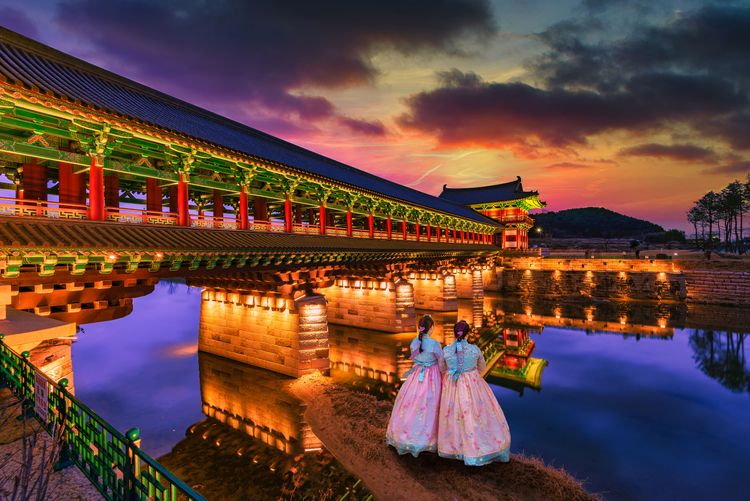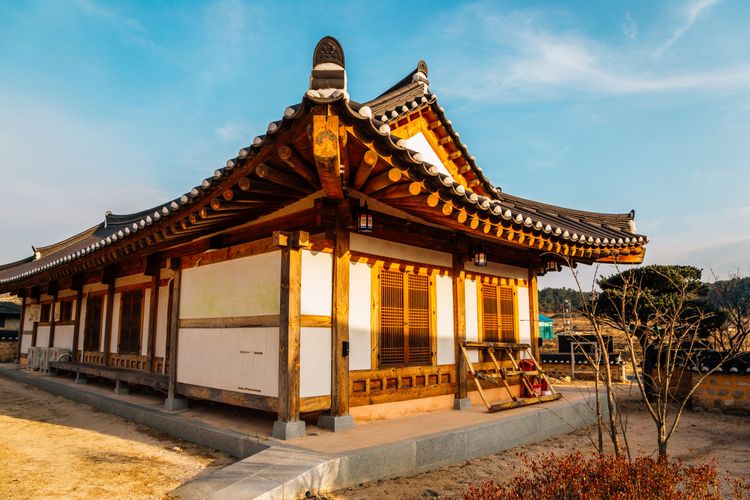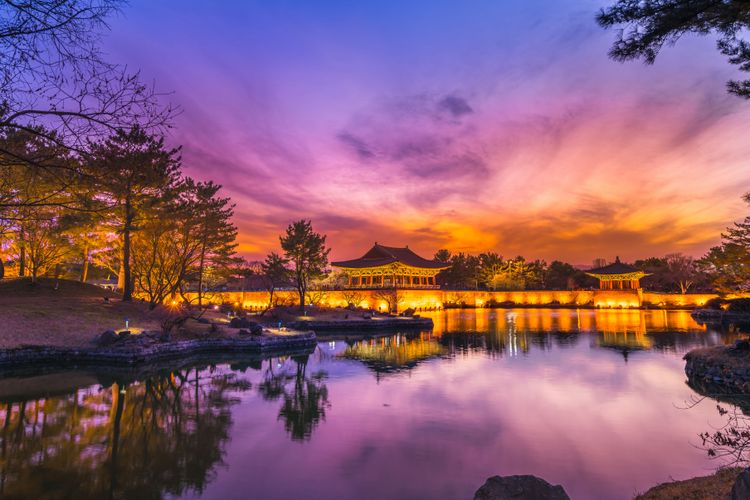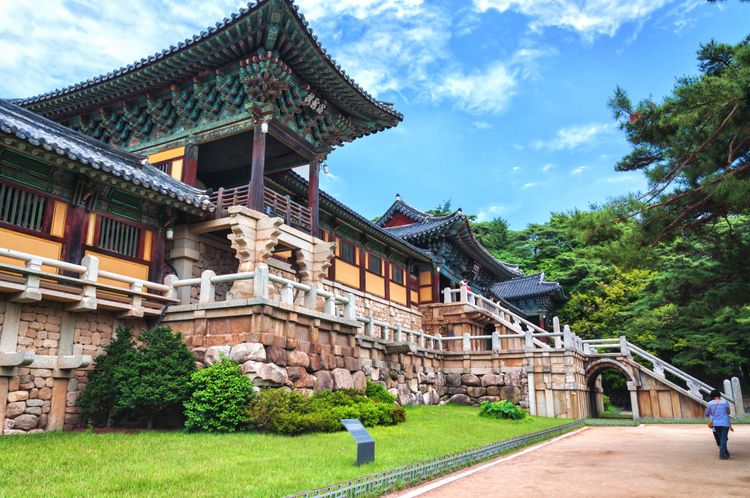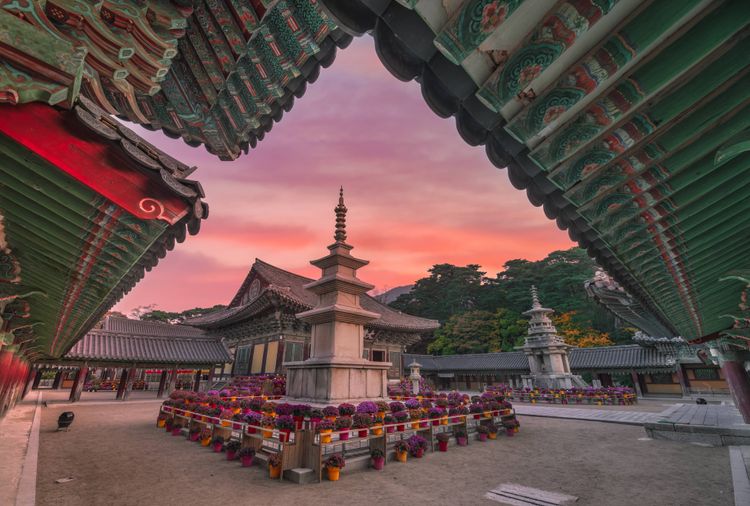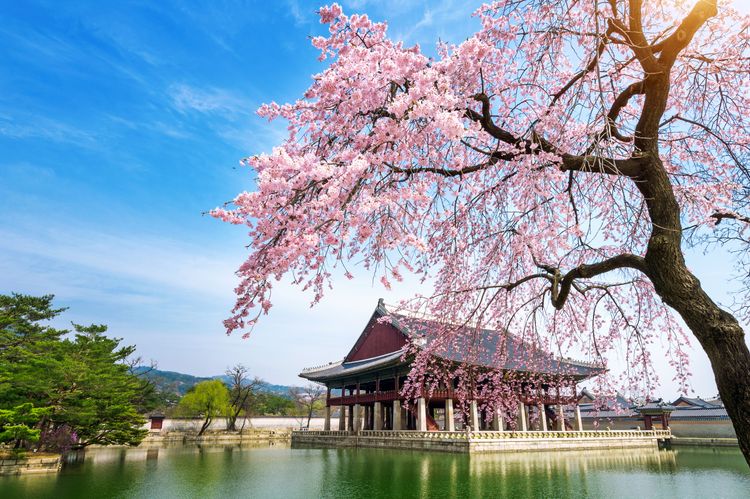Located in Gyeongsangbuk-do, Gyeongju was the country's capital during the Silla dynasty, which lasted for almost 1,000 years. At the time, Gyeongju was the fourth largest city in the world. Fifty-six kings reigned during this long period. Today, the city may have lost its status as capital, but it remains a living museum with historic sites and relics everywhere, bearing witness to the Silla dynasty and the kingdom's lavish lifestyle.
 South Korea
South Korea
